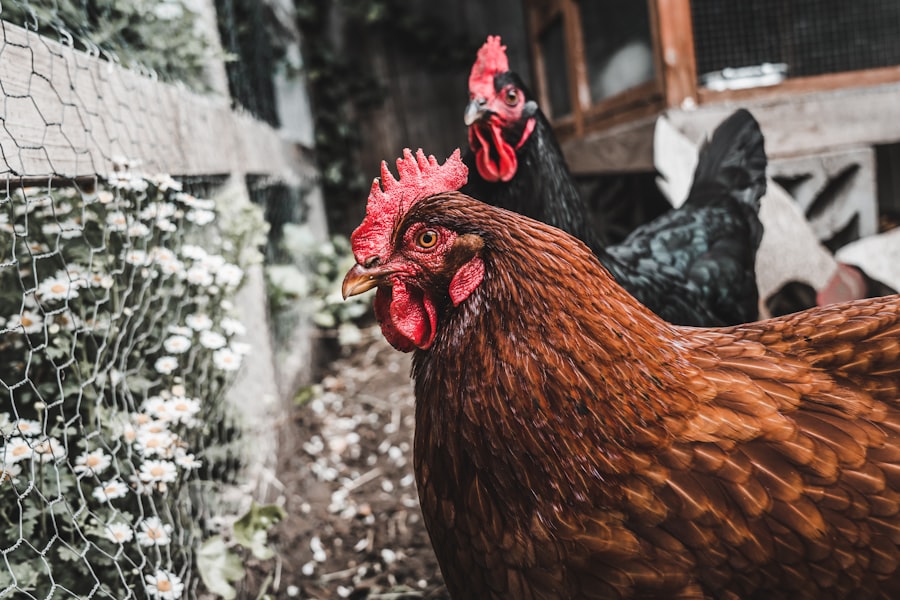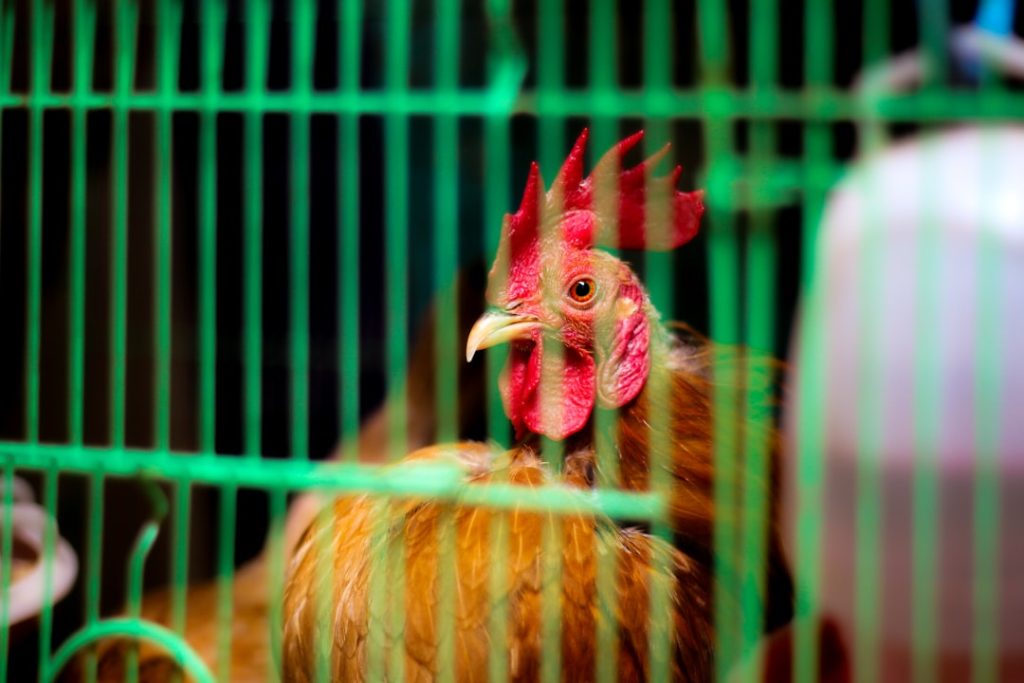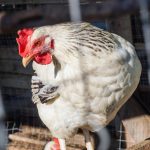Line breeding is a breeding strategy that involves mating closely related individuals within a specific family line to concentrate desirable traits and characteristics. The goal of line breeding is to fix and enhance these traits within the population, ultimately producing offspring that consistently exhibit the desired qualities. This method is commonly used in poultry breeding to improve specific traits such as egg production, meat quality, or disease resistance.
In line breeding, the breeder selects a superior individual with the desired traits and uses it as the foundation for the breeding program. Offspring from this individual are then selectively bred back to the original ancestor or to other closely related individuals within the same family line. This process is repeated over several generations to establish a genetically uniform population with the desired traits.
It is important to note that line breeding should be carefully managed to avoid inbreeding depression, which can lead to reduced fertility, increased susceptibility to diseases, and other health issues. Line breeding requires a deep understanding of genetics and a keen eye for selecting the right breeding stock. It is a long-term breeding strategy that requires patience and careful planning to achieve the desired results.
By concentrating desirable traits within a specific family line, line breeding can lead to significant improvements in the overall quality of the chicken population.
Table of Contents
Key Takeaways
- Line breeding involves breeding closely related individuals to maintain desirable traits
- Select breeding stock with strong genetic traits and good health
- Establish a breeding program with clear goals and a long-term vision
- Manage genetic diversity to avoid inbreeding and maintain a healthy gene pool
- Monitor and evaluate breeding results to track progress and make informed decisions
- Potential challenges include inbreeding depression and loss of genetic diversity
- The future of line breeding in chicken production involves advanced genetic technologies and sustainable breeding practices
Selecting the Right Breeding Stock
Key Traits to Prioritize
When choosing breeding stock for line breeding, breeders should prioritize traits such as egg production, meat quality, growth rate, and disease resistance.
Genetic Background and Diversity
It is important to select individuals that not only exhibit these traits but also have a strong genetic background that can be passed on to future generations. Breeders should also consider the genetic diversity and health of the breeding stock, avoiding individuals that are closely related or have a history of genetic abnormalities. Genetic diversity is crucial for maintaining a healthy and robust population, so breeders should carefully evaluate the genetic background of potential breeding stock to ensure that it is diverse and free from harmful genetic defects.
Temperament and Behavior
Furthermore, breeders should also consider the temperament and behavior of the breeding stock. Chickens with calm and docile temperaments are easier to handle and manage, making them ideal for breeding programs. By selecting breeding stock with the right combination of physical traits, genetic diversity, and temperament, breeders can lay a strong foundation for a successful line breeding program.
Establishing a Breeding Program
Establishing a successful line breeding program requires careful planning and meticulous record-keeping. The first step in establishing a breeding program is to select the initial breeding stock with the desired traits and genetic background. Once the breeding stock has been selected, breeders should develop a clear breeding plan that outlines the specific goals and objectives of the program.
The breeding plan should include details such as the number of generations required to achieve the desired traits, the selection criteria for choosing breeding stock, and the mating strategies to be employed. It is important to maintain detailed records of each individual in the breeding program, including their pedigree, performance data, and any health issues or abnormalities. In addition to planning and record-keeping, breeders should also establish a system for monitoring and evaluating the progress of the breeding program.
Regular evaluations of the offspring should be conducted to assess their performance and ensure that the desired traits are being passed on to future generations. By establishing a clear breeding plan and implementing a robust monitoring system, breeders can maximize the success of their line breeding program.
Managing Genetic Diversity
Genetic diversity is essential for maintaining a healthy and resilient chicken population. In line breeding, there is a risk of reducing genetic diversity over time as individuals within the same family line are repeatedly bred together. To mitigate this risk, breeders should carefully manage genetic diversity within their breeding program.
One way to manage genetic diversity is by periodically introducing new genetic material into the population. This can be achieved by outcrossing with unrelated individuals from other family lines or by introducing new bloodlines into the breeding program. By periodically introducing new genetic material, breeders can prevent inbreeding depression and maintain a diverse gene pool within the population.
Another important aspect of managing genetic diversity is maintaining detailed records of each individual in the breeding program. Pedigree information, performance data, and health records should be meticulously documented to track the genetic background of each individual and identify potential areas of concern. By closely monitoring genetic diversity and implementing strategies to maintain a healthy gene pool, breeders can ensure the long-term success of their line breeding program.
Monitoring and Evaluating Breeding Results
Monitoring and evaluating breeding results are essential for assessing the progress of a line breeding program. Regular evaluations of offspring performance can provide valuable insights into the success of the program and help breeders make informed decisions about future mating strategies. Performance data such as egg production, growth rate, meat quality, and disease resistance should be collected and analyzed to assess the impact of line breeding on these traits.
By comparing the performance of offspring from different generations, breeders can identify any improvements or declines in trait expression and make adjustments to their breeding program accordingly. In addition to performance data, breeders should also consider other factors such as temperament, behavior, and overall health when evaluating breeding results. These qualitative assessments can provide valuable information about the overall quality of the offspring and help breeders make informed decisions about which individuals to select for future matings.
By regularly monitoring and evaluating breeding results, breeders can gain valuable insights into the effectiveness of their line breeding program and make adjustments as needed to achieve their breeding goals.
Potential Challenges and Pitfalls

Risk of Inbreeding Depression
One of the most significant challenges of line breeding is the risk of inbreeding depression. This occurs when closely related individuals are repeatedly bred together, leading to reduced fertility, increased susceptibility to diseases, and other health issues. These problems can negatively impact the overall quality of the population and must be carefully managed.
Maintaining Genetic Diversity
Another potential challenge is maintaining genetic diversity within the population. As individuals within the same family line are repeatedly bred together, there is a risk of reducing genetic diversity over time. This can lead to an increased prevalence of harmful genetic defects and a decline in overall population health.
Managing Undesirable Traits
Line breeding also requires careful management and planning to avoid undesirable traits from becoming fixed within the population. Without proper selection criteria and monitoring systems in place, breeders run the risk of inadvertently fixing undesirable traits within their line-bred population. To mitigate these challenges, breeders should carefully manage genetic diversity within their breeding program, regularly monitor and evaluate breeding results, and implement strategies to prevent inbreeding depression.
By actively managing these potential challenges and pitfalls, breeders can maximize the success of their line breeding program.
The Future of Line Breeding in Chicken Production
The future of line breeding in chicken production holds great promise for further advancements in poultry genetics and production efficiency. As technology continues to advance, breeders will have access to more sophisticated tools for genetic analysis and selection, allowing them to more accurately identify and concentrate desirable traits within their breeding programs. Furthermore, advancements in genomic selection and marker-assisted breeding will enable breeders to more effectively select for specific genes associated with desirable traits such as disease resistance or feed efficiency.
These technologies will revolutionize line breeding by allowing breeders to make more informed decisions about which individuals to select for future matings based on their genetic makeup. Additionally, as consumer demand for high-quality poultry products continues to grow, there will be an increased focus on developing chicken breeds with superior meat quality, egg production, and overall health. Line breeding will play a crucial role in achieving these goals by allowing breeders to concentrate desirable traits within specific family lines and produce offspring that consistently exhibit these qualities.
In conclusion, line breeding is a powerful tool for improving specific traits within chicken populations and will continue to play a vital role in poultry production in the years to come. With careful management of genetic diversity, regular monitoring and evaluation of breeding results, and advancements in genetic technologies, line breeding has the potential to drive significant advancements in poultry genetics and production efficiency. As breeders continue to refine their line breeding programs and leverage new technologies, we can expect to see continued improvements in poultry quality and productivity through this time-tested breeding strategy.
If you’re interested in line breeding chickens, you may also want to consider the importance of providing a suitable coop for your poultry. Poultry Wizard offers a helpful article on the topic, “Do Turkeys Need a Coop?” which discusses the housing needs of turkeys and how it relates to their overall well-being. Check it out here.
FAQs
What is line breeding in chickens?
Line breeding in chickens is a selective breeding method where closely related individuals within the same family line are mated to maintain or enhance specific desirable traits.
What are the benefits of line breeding chickens?
Line breeding can help to fix and improve certain desirable traits such as egg production, meat quality, and disease resistance within a specific chicken line. It can also help to maintain genetic purity and consistency within a breed.
What are the potential drawbacks of line breeding chickens?
Line breeding can lead to an increase in the expression of undesirable traits or genetic defects within a population due to the concentration of genes from closely related individuals. It can also reduce genetic diversity and increase the risk of inbreeding depression.
How can line breeding be done effectively in chickens?
To effectively line breed chickens, it is important to carefully select breeding stock with the desired traits, monitor and record the performance of offspring, and periodically introduce new genetic material from unrelated lines to maintain genetic diversity and minimize the risk of inbreeding.
What are some common traits that line breeders aim to improve in chickens?
Line breeders often aim to improve traits such as egg production, meat quality, growth rate, feather color, and disease resistance within a specific chicken line through selective breeding and line breeding practices.
Meet Walter, the feathered-friend fanatic of Florida! Nestled in the sunshine state, Walter struts through life with his feathered companions, clucking his way to happiness. With a coop that’s fancier than a five-star hotel, he’s the Don Juan of the chicken world. When he’s not teaching his hens to do the cha-cha, you’ll find him in a heated debate with his prized rooster, Sir Clucks-a-Lot. Walter’s poultry passion is no yolk; he’s the sunny-side-up guy you never knew you needed in your flock of friends!







